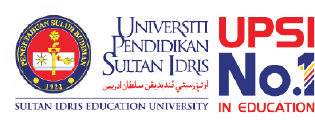மொழிப்பயன்பாட்டுக் கூறுகளும் தடய மொழியியலும்
Features of Language use and Forensic Linguistics
Keywords:
மொழிப்பயன்பாடுகள், தடய மொழியியல், மீமொழிப்பயன்பாடு, மொழித்தடயங்கள், குறிப்புப் பொருள், வாக்குமூலம்Abstract
மொழிப் பயன்பாட்டைத் தரவாகக் கொண்டு காவல் துறைக்கும் நீதித் துறைக்கும் குற்றச் சிக்கல்களை அவிழ்ப்பதற்கு உதவுகிறது ‘தடய மொழியியல்’. நீதிமன்ற வழக்குச் செயற்பாடுகளில் ஆய்வுக்குரிய மொழி சார்ந்த ஆதாரங்களை மொழியியல் கோட்பாடுகளையும் ஆய்வுமுறைகளையும் பயன்படுத்திக் கண்டறிவதற்கு எட்டுக் குற்றச் சம்பவங்களைச் சான்றுகளாகக் கொண்டு ஆராய்கிறது. ஜாக்கொப்சன் எடுத்துரைத்த ஆறு மொழிப் பயன்பாடுகளான சூழல் பயன்பாடு, படைப்பாக்கம், உணர்வுச் செயல்பாடு, குறிப்புப் பொருள், உரையடல் செயல்பாடு, மீமொழிப் பயன்பாடு ஆகியவற்றின் அடிப்படையில் குற்றவாளிகளின் வாக்குமூலங்களிலும் கூற்றுகளிலும் அவர்கள் பயன்படுத்திய மொழிக் கூறுகளின் அடிப்படையில் குற்றவாளிகளை அடையாளம் காண முயலுகிறது இக்கட்டுரை. அதோடு, இந்த ஆய்வை முன்மாதிரியாகக் கொண்டு மொழி மற்றும் இலக்கியம், கல்வி, போன்ற துறை மாணவர்களும் தங்களுக்குத் தரப்படுகின்ற பனுவல்களை ஆராய முடியும்.
Abstract
Using language function as the basis of research, Forensic linguistics helps in soving the problems related to crime and punishment for the police and judicial departments. In the legal processes, the important language evidences are to be analysed from the point of view of linguistic principles and research methods to help the Law courts in solving criminal problems. For this purpose, the present paper has brought in evidences giving eight crimes that occurred in Tamil Nadu. The data were collected from the author’s Ph.D. thesis. The article follows the structural and comparative method to analyse the materials. It has also brought out the six language functions proposed by Jacobson, namely, Referential function, Poetic function, Emotive function, Conative function, Phatic function and Metalinguistic function and uses the principles of them in analysing the confessions, statements, etc. and helps in identifying the culprits. Furthermore, the article helps in analysing the language use, which in turn will help the students of language and literature, education, etc., to analyse texts given to them.
Keywords: language functions, Forensic Linguistics, Metalinguistic function, language evidences, denotive function, confession.
Downloads
References
Barbara, Johnstone. (2005). Discourse Analysis for Rhetorical Studies. Department of English. Pittsburgh: Carnegie Mellon University.
Batuk Lal. (2004). Law of Evidence. New Delhi: Orient Publishing Company.
Coulthard, Malcolm and Johnson, A. (2010).The Routledge Handbook of Forensic Linguistics. New York: Routledge.
Danet, B. 1980. ‘Language in the Legal Process’. Law and Society Review, 14, 3, pp. 445-564.
Gibbons, John (Ed.). (1994). Language and the law. London: Longman.
Jakobson, R. (1960). Linguistics and Poetics, in T. Sebeok, ed., Style in Language, Cambridge, MA: M.I.T. Press. pp. 350-377.
Jakobson, R. (1995). On Language. Cambridge: Harvard University Press.
Leech. G. (1974). Semantics, London: Penguin.
Levi, Judith N. (1994). ‘Language as evidence: The linguist as expert witness’ in North American courts. Forensic Linguistics 1: pp. 1–26.
McMenamin, Gerald R. (2002). Forensic Linguistics: advances in forensic stylistics. Boca Raton: CRC Press.
Rafferty, Lisa. (1999). ‘Anything you say can and will be used against you: Spectrographic Evidence in criminal cases’. American Criminal Law Review 36: pp. 291–311.
Rose, P. (2002). Forensic Speaker Identification. London: Taylor and Francis.
Rutledge, D. (1994). Criminal Interrogation: Law and Tactics Placerville, CA: Copperhouse
Shuy, Roger. W. (1998). The language of confession, interrogation and deception. CA: Sage.
Vijayan, N. 2015. Legal Processes: A Forensic Linguistic Study (Unpublished Ph.D. Thesis), Annamalainagar: Annamalai University.
Vijayan, N. 2016. Evaluation of the Statements and Confessions from the point of view of Forensic Linguistics. languageinindia
www.languageinindia.com
ISSN 1930-2940. pp. 76-94.
Vijayan, N. (2017) taDaya mozhiyiyalaal sikkum kuRRavaaLikaL. Dinamalar Newspaper. August 22. page one. SintanaikkaLam
Vijayan, N. 2018. Communicative Competence and researchers in Forensic Linguistics. In karka, kapikka. ISSN 2347-1751. vol. 5 issue. 4. pp. 43 -47.




